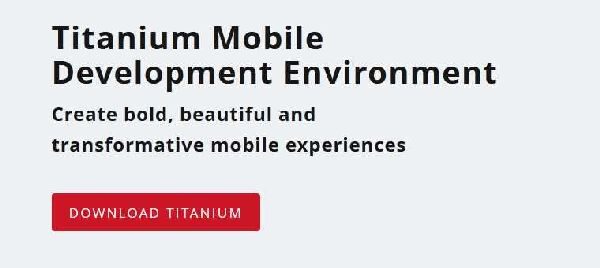If you are on the hunt for cross platform compatible JavaScript Runtime and Application Programming Interface Android Framework that can rule the world of Mobile Web Development then Titanium Android Framework is the best possible option with great future support for all the platforms including Windows or Blackberry.
Though this Android Framework resembles the features of Phone Gap and Rhodes such as attempting to provide cross platform compatibility through web technologies it is not the same. When using Titanium Android Framework for writing an application you are actually writing a native web application using JavaScript.
Now the question here is that if the web applications that you are writing are native then in that case how will Titanium as an Android Framework function behind the scenes. Titanium as an Android Framework makes use of a unified JavaScript Application Programming Interface along with certain platform specific features in conjunction with native performance.
If using Titanium Android Framework you need to understand 2 important concepts about this framework. The primary thing that you need to understand is that the core features in mobile web development are likely to have the same experience across different platforms and you should make it a habit to reuse the code.
The next most important thing that you need to understand is that with increasing number of platform specific Application Programming Interfaces, User Interfaces and features, web developers will have to make use of specific platform targeted code. This is the reason why Titanium does not follow a “Write Once, Run Everywhere “approach.
Thus Titanium has a lot to offer in terms of great user experience by providing access to local user interfaces and local features so as to acquire a great level of performance when compared to other hybrid approaches.
Better Insight into Titanium Android Framework
Titanium as an Android Framework will take the code written in JavaScript and will combine this code with the Application Programming Interface of Titanium that is written in the targeted device’s local language and will evaluate your code at runtime with the help of a JavaScript Entrepreneur that will run on the operating system of the device.
When you will launch your application a JavaScript execution is created in the local code and the JavaScript will be injected just similar to an inline object paired with local objects inside the runtime environment. The pairing is clearly one to one i.e. just running inline JavaScript inside HTML. This will allow the Titanium application programming interface to act as a link in exposing direct access to the native experience via actual local features and application programming interfaces.
There are several misconceptions developed about the Titanium Framework over the years that can now easily be exposed in case you have a deeper understanding about the Titanium Framework. One of the major misconceptions is that Titanium does not make use of web view component approach that other JavaScript toolkits use.
JavaScript that is written in Titanium framework is not actually cross compiled with other respective local languages. The JavaScript code will be evaluated at runtime and Titanium will provide native user interface animations and controls rather than replicating it through JavaScript toolkits or CSS.
Pros and Cons of Titanium Framework
The major strength of Titanium include higher and wider level of Application Programming Interfaces ,device specific extra ordinary features , native user interface and many more. This framework provides similar components and user interface to both iOS developers and Android developers which is an amazing hybrid approach that is not provided by other web developers.
In short you can say that for Visual Emulation via OpenGL, Flash or CSS you are making use of the platform’s backend User interface controllers, animations and behaviors that provides the native experience which most of the users expect. You can as well extend on all these visual aspects and all other core characteristics by extending the Titanium APT to best match up with all the requirements of your applications.
One more added advantage of the Titanium Framework is that you can develop native apps by having the knowledge of JavaScript rather than having to learn platform specific languages. Last but not the least once you have completed the coding of the web application, Titanium will render you an automated method to package and distribute your web application to the respective app store of the platform you are working with through an Integrated Device Environment known as Titanium Studio.
One of the biggest disadvantages of using Titanium framework is that the support provided is not wide enough to meet the needs of the modern users. This is for the reason that the Titanium API will connect directly with the native platform and taking up a novel platform is lot of work.
This is the only reason why Titanium provides support for huge platforms in iOS, Android and some kind of mobile web browser support. As well some of the UI components don’t perform so well as their native counterparts. The Titanium team actually focuses on the fact that they are more interested in devoting their valuable time in working on these issues.
Titanium will never provide support for all the native application programming interfaces and device functionality that will continue to nourish and develop on all the local platforms with each novel release and update to the OS’s. Titanium is making efforts to provide at least ninety percent of the API’s and native functionality on almost all the supported platforms.
If you have a deeper understanding of the manner in which Titanium works as a platform you will get to know the real power of Titanium as an Android Framework. It is a solution that helps you develop mobile web applications devoid of having to learn programming code for each of the individual platforms. Titanium is a platform which has the ability to access device functionality and native controls by rendering a great user experience by providing animations and behavior the way any user expects.
